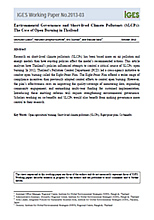In Waste as a Resource
The key challenges in waste management facing rapidly developing economies are the consideration of increasing resource consumption and waste generation, as well as the establishment of a ‘‘sound material cycle society’’. The latter refers to the concept of promoting a social change in which the consumption of natural resources is minimised and the...








